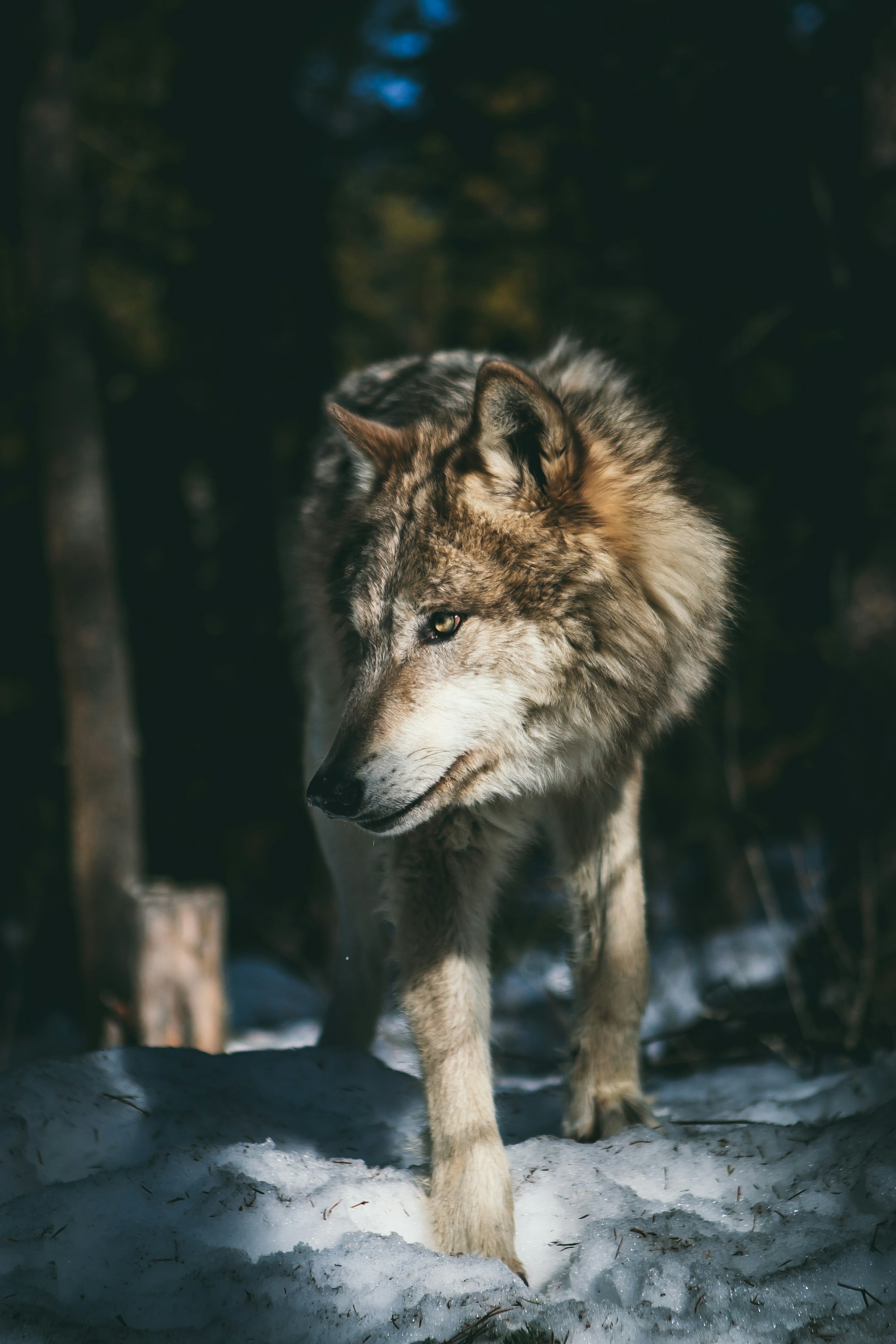Humans can connect with dogs on so many levels. That comes from a history of domestication that goes back up to 40,00 years. People and their canine companions understand each other well. Dogs can read our body language. We are an open book to our pets. The next question you may have is can dogs understand wolves/coyotes? After all, they are all related.
There are several ways to approach this question. We can look at it from the relationship that exists between the three animals and how they communicate among themselves. We can also consider it based on how social each canid is. Finally, we can explore the one thing that separates dogs, wolves, and coyotes - domestication.

Relationship Between Dogs, Wolves, and Coyotes
Dogs and wolves share a common ancestor, contrary to popular belief that the former evolved from the latter. We can look further back to determine where the coyotes fit in with this evolutionary history. Recent research has suggested that all North American canines—including wolves and coyotes—diverged from a common ancestor between 6–117,000 years ago.
Scientists estimate that wolves split from coyotes between 50,800–52,100 years ago. For dogs, the timeline is 27,000–40,000 years ago. Evolutionarily speaking, all these canids have a close genetic relationship. All can interbreed and have viable offspring since they have the same number of chromosomes (78). Interestingly, humans share 84 percent of their DNA with dogs.
All of this information means that dogs, wolves, and coyotes share a lot in common. The fact that they can interbreed suggests that they understand each other. However, behavioral differences often get in the way. Researchers have found that wolves can have a negative effect on coyote populations and can curb their numbers. That can, in turn, change the ecological dynamics in the environment.

Communication
These canines share similar ways of communicating, namely, barks, whimpers, and howls. They each have several vocalizations that express different emotions. Any one of them will understand that a growl means stay away from me. A whimper may broadcast feelings of submission or pain. Howling helps members of a group find each other. It also acts as a way to define a territory.
Dogs, wolves, and coyotes share a trait that is common among many animals. Fighting for whatever reason takes energy. For predators, that can spell disaster since they aren’t successful every time they hunt. It often depends on the size of the prey and the number of animals hunting together.
Many dog breeds have retained this prey drive, particularly hunting companions. This like motivation suggests that your pup understands wolves and coyotes better than you may think at a visceral level. We’re talking survival skills. Dogs get it. We can also take this a step further to say that all these canids relate to these instincts.
Social Relationships
Socialization is a critical part of any canine’s early development. Dogs, wolves, and coyotes are all born unable to see or hear. It makes evolutionary sense since it allows the mother to hunt for food to bring back to the den. They begin to figure out what kind of animal they are starting at about 3 weeks old. After this time, these canids are learning about building social relationships.
They also grasp the dynamics of the hierarchy in groups. All puppies of any of these canids go through those growing pains of play and fighting. They bring those same social skills to the table when encountering any of their canine counterparts. Unfortunately, coyotes and wolves act on their superior skills. It’s not unusual for any of them to attack a dog.
We can safely say that coyotes and wolves understand dogs since they can figure out that they are a potential threat and act accordingly. It’s not unusual with other predators, such as bears. They will also take small pets if left unattended. We can conclude that dogs understand the hierarchy between them and coyotes and wolves enough to defend their territory if threatened.

Domestication
Domestication is the wild card. Of course, dogs are the only one of the trio to have this relationship with humans. Bear in mind that we are talking about thousands of years of contact. That fact will affect the domesticated dog’s diet, personality, and variation that exists between breeds. Our pets fill so many roles that wild canids do not. That means they may not understand each other on some levels.
As domesticated animals, our dogs don’t have the same instincts that drive the behavior of wild canids. They have a safe home base and a steady diet. While obesity is a serious health issue with our pets, the opposite is the case with wolves and coyotes. Play is another stark difference. Wild canids will engage in this behavior in their early days of socialization. Our dogs continue to play as adults.
Domestication has opened up dogs to new experiences that wild canids never encounter. However, the fact remains that our pets are hardwired for a world that existed thousands of years ago. They will still chase an animal that runs away from them. They know how to defend their territory or food. We can then conclude that our dogs have wolf and coyote traits, supplemented by domestication.
Final Thoughts
Dogs, wolves, and coyotes share a common heritage, which manifests itself in similar behaviors that all animals understand. They exist on the basic level of survival where all know what to do to stay safe and defend what they have. They know the emotions that their counterparts are conveying by body posture, vocalizations, and other traits.
All these canids can communicate and understand each other. Evolution separates them behaviorally and physiologically, but that doesn’t mean that each animal doesn’t know the score. Interestingly, their modes of communication transcend beyond the canine world. Humans and many other animals use the same playbook. After all, some emotions are universal and part of the collective consciousness.

